Hosta: description of species and varieties, secrets of cultivation and reproduction
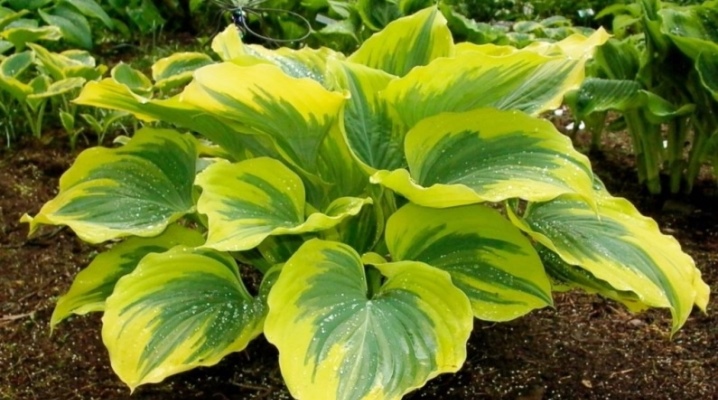
Many gardeners, when decorating their site, tend to choose hosts as a perennial plant. This shrub is picky to care for, resistant to extreme cold and has a unique foliage color. In this article you will get acquainted with the description of hosta species and varieties, as well as with the secrets of growing and reproducing this plant.
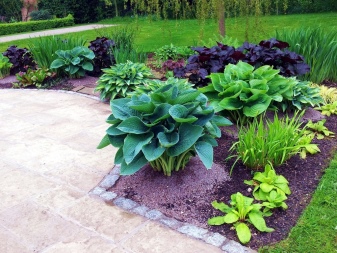
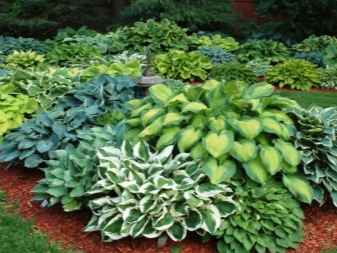
What it is?
Hosta belongs to the perennial plants of the Asparagus family. Initially, this perennial bore the name "Funkia", in honor of the German botanist GK Funk, but at the beginning of the 20th century the plant was given its modern name - already in honor of the Austrian botanist Nikolaus Thomas Host. The homeland of the shrub is the territory of the Far East.
The flowering period of the hosta, depending on the variety and species, falls on June-August.
The inflorescences of this plant are located on fairly high peduncles, have a funnel-shaped or bell-shaped shape and can be found in white, purple and lilac shades.

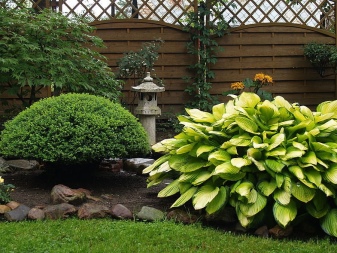
The main advantage of the hosta as a garden plant is its luxurious leaves that form a rosette. Depending on the variety, they can be narrow, round, thin or dense, and also differ in an individual shade - from variegated and light colors to deep emerald tones.
Among all other garden plants, the hosta is considered a real long-liver - some varieties of this plant, under favorable conditions and careful care, can live up to 25 years.

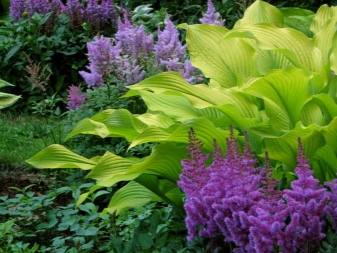
Overview of species and varieties
Today, there are about 4 separate host classification: by size, by type of color, as well as by the classification of varieties and varieties of these garden plants.
Classification according to the color of the stems and leaves.
- Blue. Plants of this type have blue foliage.

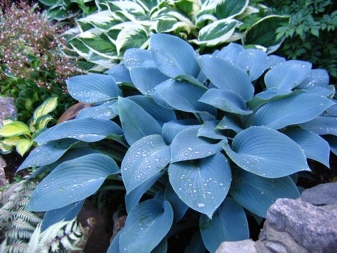
- Yellow. Includes all varieties of hostas with gradient yellow leaves.
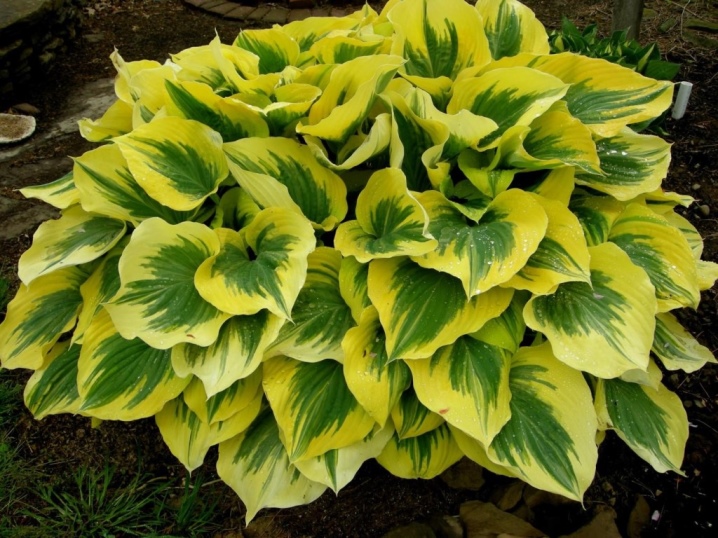
- Green. These plants have light green or emerald leaves.
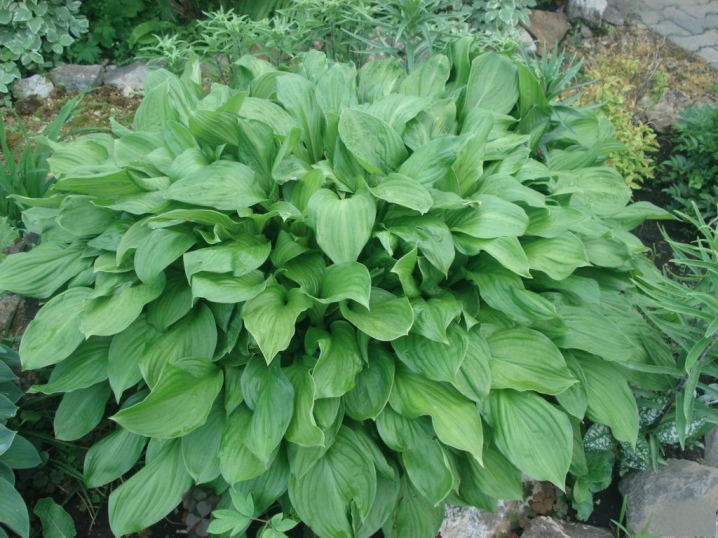
- Variegata. This type includes all host varieties with an extraordinary and variegated color, as well as plants with a characteristic light or spotted leaf frame.
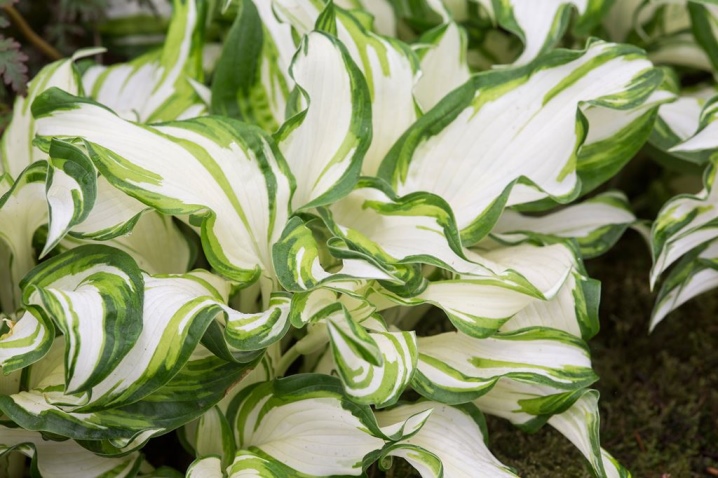
- Mediovariety. Hosts of this type have light sheets with a green border along the contour of the sheet.

Classification based on the size of the hosts.
- Dwarf host species are called Dwarf... These plants do not grow taller than 10 cm.
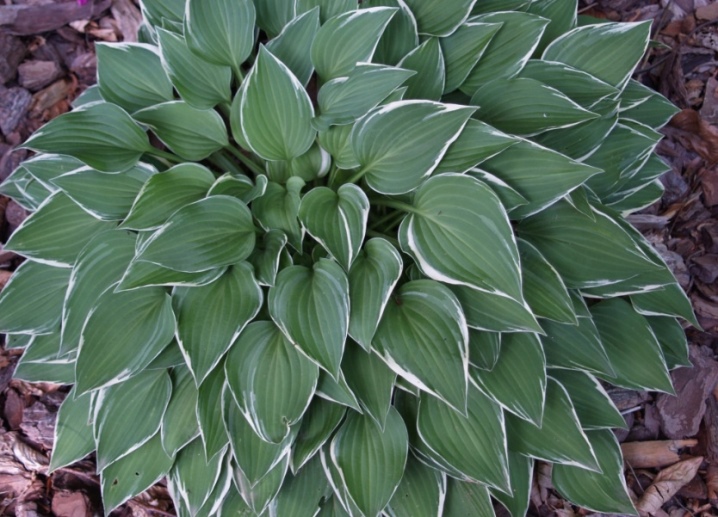
- Miniature - Miniature... The height is slightly more - from 10 to 15 cm.
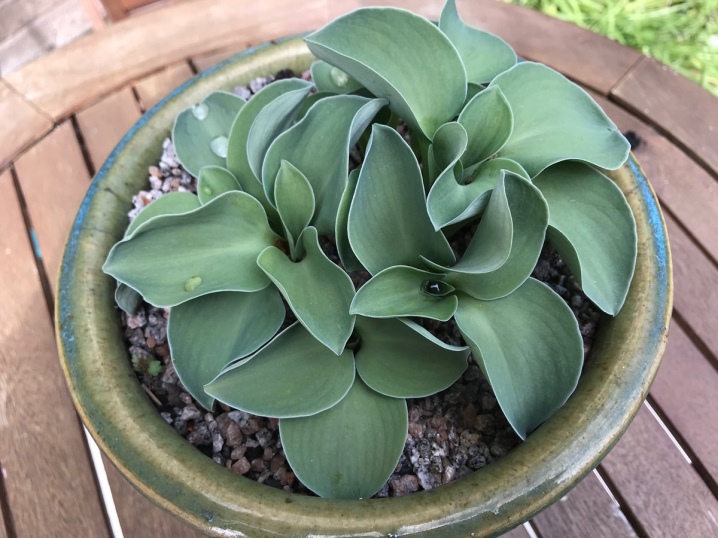
- Small type hosts - Small... Height from 15 to 25 cm.
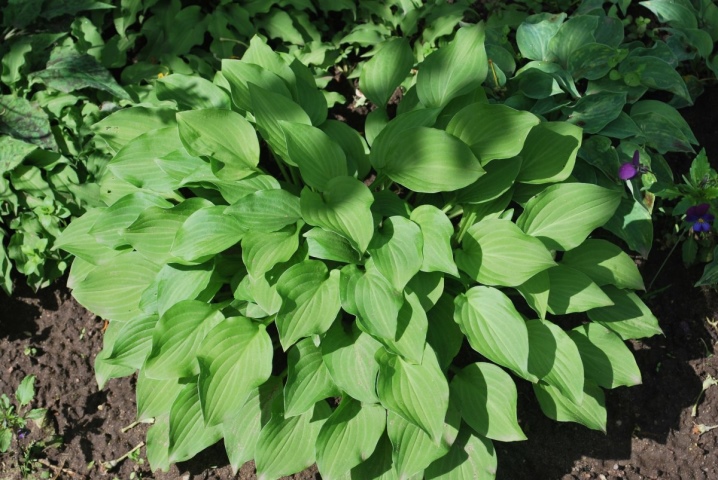
- Medium - plants with an average height of 0.3 to 0.5 m are located here. This is the most common group with a huge number of varieties.
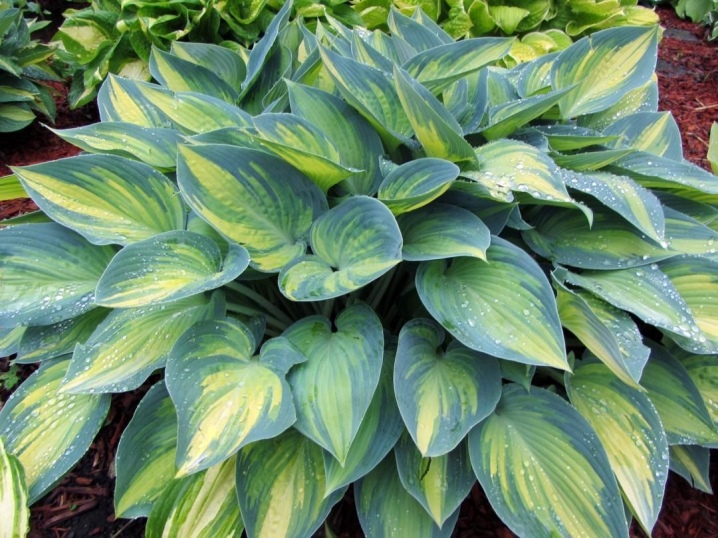
- Large - these plants are capable of growing up to 0.7 m.
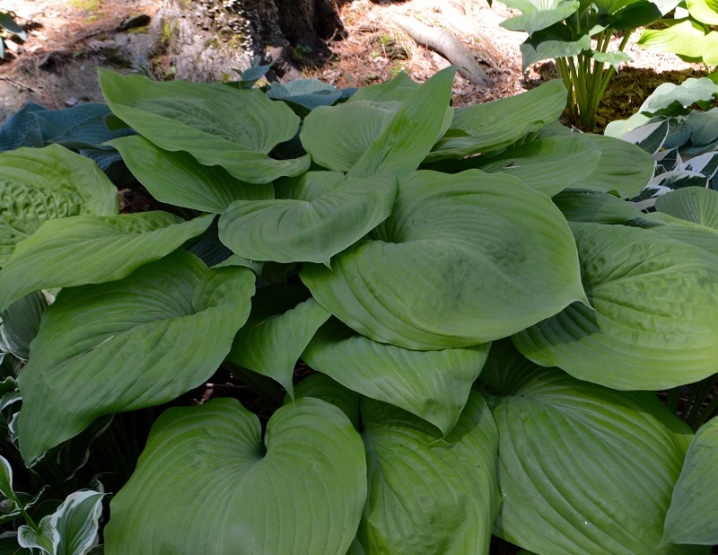
- To hosts like Giant include all varieties of such plants with a height of 70 cm or more.
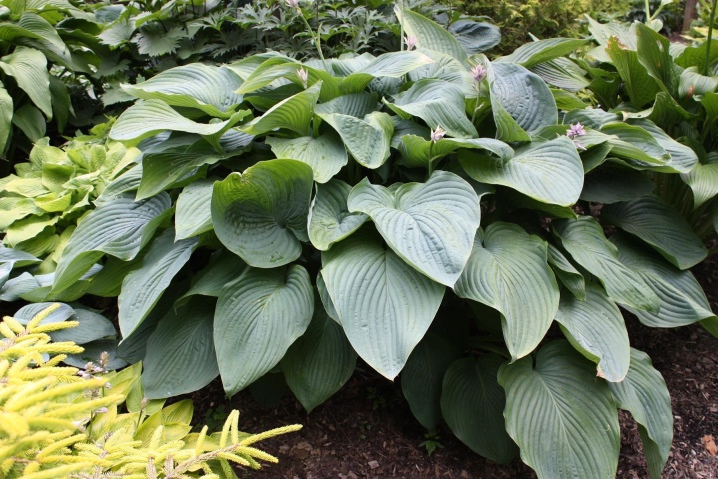
All garden hosts are subdivided into several varieties, each of which has individual external qualities and preferences in landing.
- Curly (or curly). Plants of this variety include undersized miniature hosts with heart-shaped leaves, sharp edges and rounded tips. These beauties also have a characteristic white border along the edges of the leaf.Despite the relatively low height, each leaf of such a hosta can grow up to 16 cm in length.
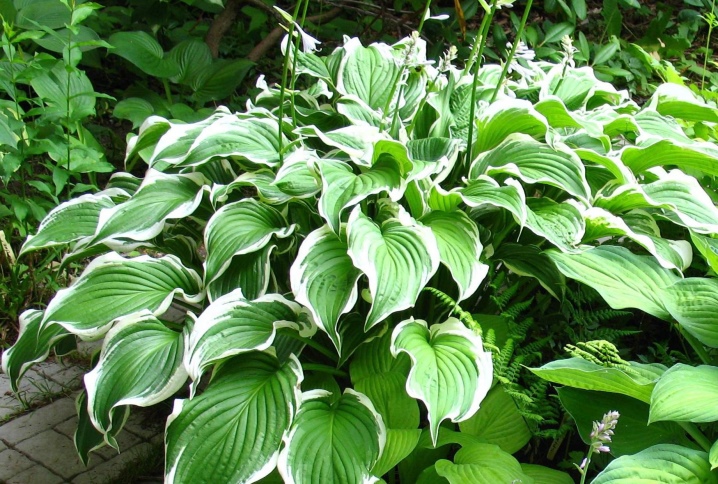
- Wavy. This is a taller plant, the peduncle of which can grow to a height of 80 cm or more. This hosta received this name due to the unique wavy shape of its leaves, each of which can grow up to 20 cm in length. The flowers of these plants resemble bells and are distinguished by a soft purple color.
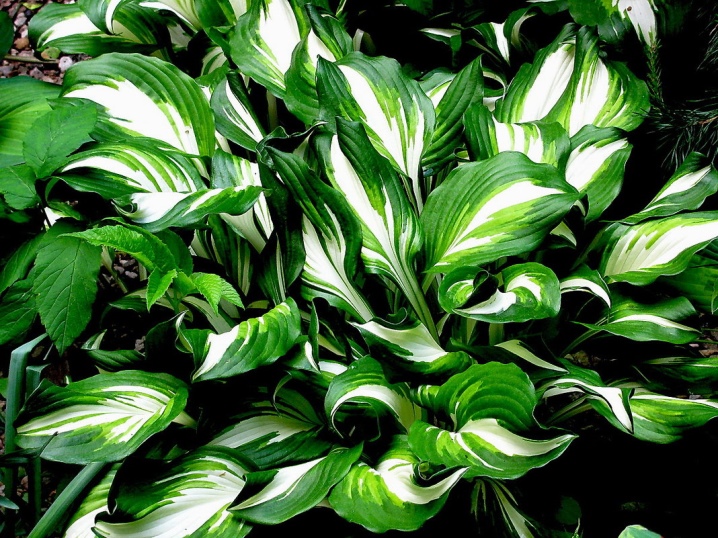
- Plantain. A fairly tall plant, the stems of which are capable of reaching 70 cm in height. The rounded and slender leaves of this hosta have a bright green hue and a characteristic glossy sheen, which is especially noticeable in the sun. The flowering period falls on August - the inflorescences are faded, gray and do not distinguish the plant against the background of the flower garden.

- Bloated. These outdoor plants have large and almost round dark green leaves up to 25 cm in length each. The inflorescences are located on a long peduncle, the flowers are small and cast in a soft lilac shade. They can grow up to 0.8 meters.
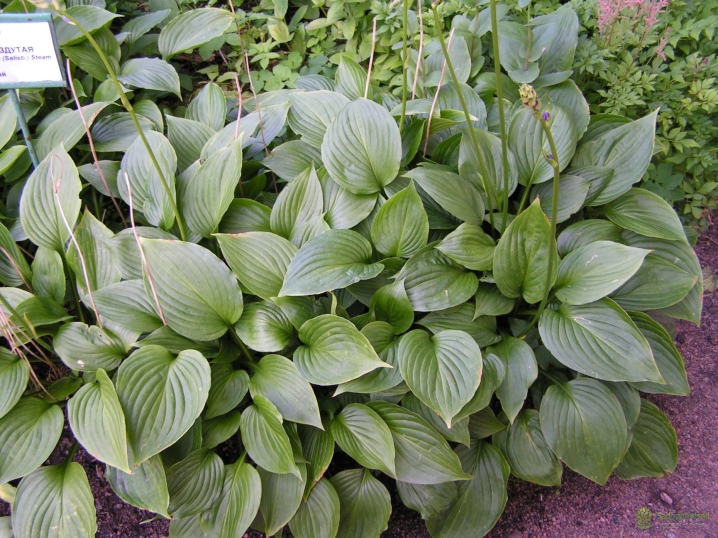
- High. Such hosts have dense leaves of rich green color. Each leaf is attached to the stem of the plant with long, dense petioles. It has low peduncles. The flowers in the inflorescence are densely arranged, tubular in shape, differ in lilac color.
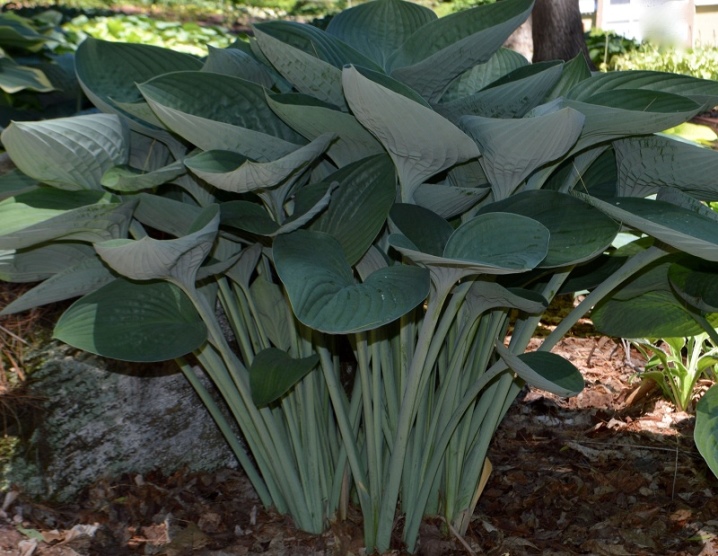
- Lanceolate. This variety is also called narrow-leaved. The average height of these perennial plants is about 35-40 cm. A distinctive feature of the hosts are pointed glossy leaves of a dark green color.
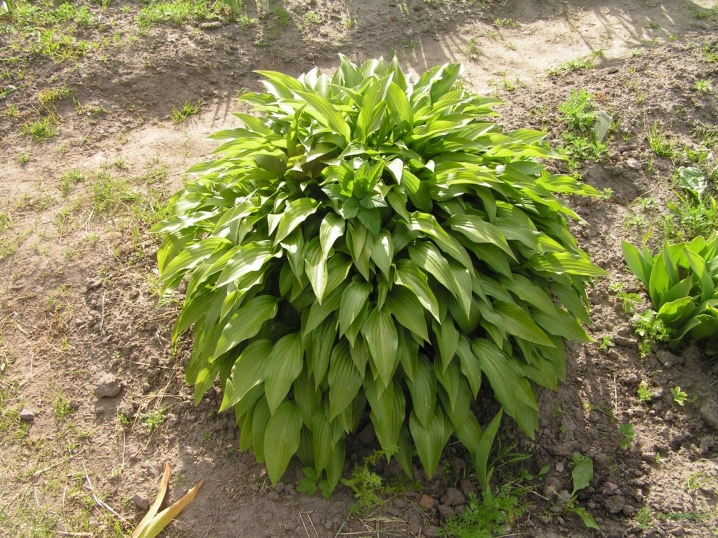
- Royal. These giants (up to 80 cm in height) are distinguished by long, bright green leaves, as well as large white flowers (like a bell), which exude a charming and light scent. This plant sheds its last buds only under frost.

- Hosta Siebold. This hosta variety has almost round, dense leaves of rich green color, which can reach 35 cm in length. A characteristic feature of the species is the waxy coating of the leaves, which makes them matte and smooth. Flowering occurs in July, the peduncles themselves have pastel purple hues.
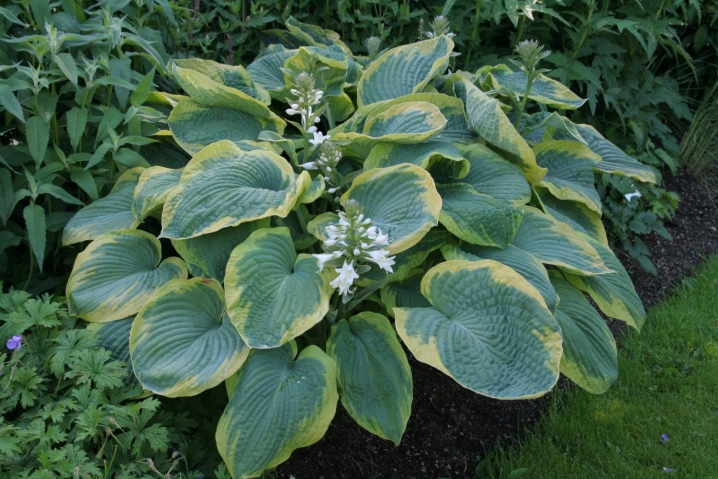
- Hosta Fortune. It resembles the Siebold variety, but has a much shorter leaf length and taller peduncles, which bloom in August.
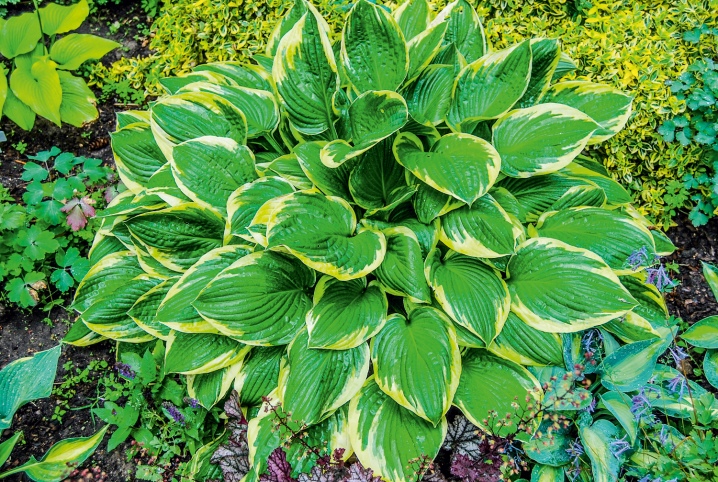
If we consider the most popular varieties of plants, then among the variegated hosts one can distinguish “First Mate”, “Patriot”, “Wide Brim”, “Univitata” and “Aureomakulata”.

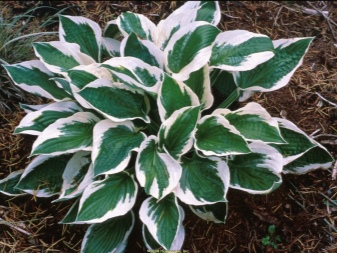
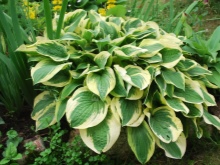
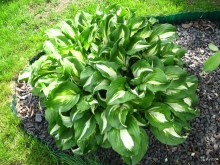
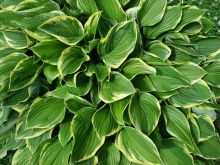
Plants with dense leaves of emerald, dark green and jade color are considered the most beautiful and respectable hosta varieties. Here you can distinguish such varieties as "June", "Elegance" and "Blue Cadet".
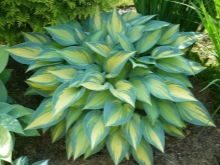
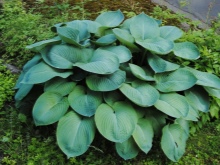
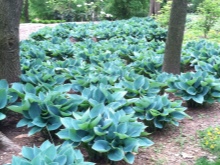
Choosing a place
One of the main factors when you want to plant hosts at their summer cottage is the selection of a suitable place. There are a number of factors worth paying attention to here.
- Shadow. Despite what some gardeners call the hosta the "shadow queen," this plant does not like to grow in full shade. This should be a partially sunlit area where natural light will hit the plant before 12 noon and after 6-7 pm. When choosing the light intensity, be guided by the variety of your hosts. Variegated varieties need sunny locations, darker and colder colors need places with more shade.
- Humidity. All varieties and varieties of hosts with dense leaves of saturated colors simply adore abundant watering, but they do not tolerate stagnant moisture. That is why such plants should not be planted in low areas, where moisture will constantly accumulate.
- Nutrientity and acidity of the soil. Hosts are very picky about the type of soil on which they are planted. Most of all they like moist, loamy, slightly alkaline or slightly acidic soil with a lot of nutrients.
- Ventilation. Since the hosta is more of a stunted plant due to its small stature, strong winds will not harm it, but stagnant air or poor ventilation can negatively affect the condition of the leaves or inflorescences.
- What it goes with. In the case of the hosta, a very important factor when choosing a place in a flower bed is its compatibility with other plants. For a semi-shady area, combinations of hosts with periwinkle, heuchera, gourd, primrose or ferns are best suited. Hosta will look very impressive in conjunction with the astilbe flower.
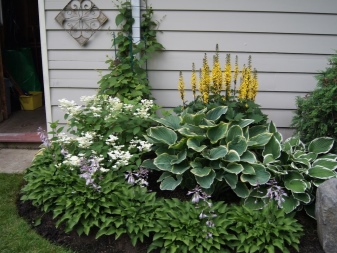
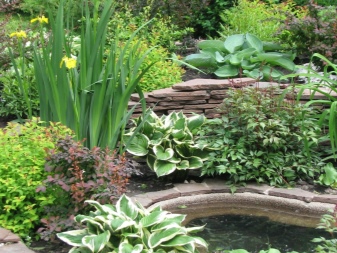
Landing rules
The only major difference between planting hostas and planting other perennial plants in open ground is the presence of wide planting holes. The fact is that the host's root system grows very quickly and needs a lot of space to develop.
The hosta should be planted in the garden in mid-spring (the second half of April or the first days of May) after the onset of warm days, but before the period of sap flow and active growth of the root system.
Or at the very beginning of a warm autumn (the last days of August and the beginning of September).
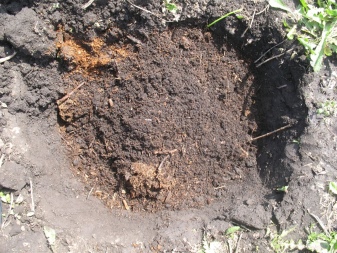
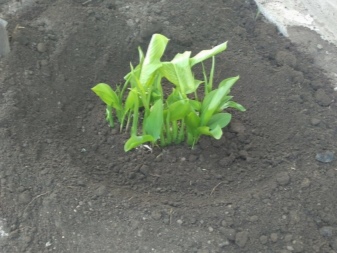
Another important point when planting hosts in a flower bed is determining the distance from this plant to neighboring garden crops... So, for dwarf and medium varieties, a distance of up to 30 cm should be maintained. In the case of large and giant species, choose a distance of at least 40 cm to nearby plants.
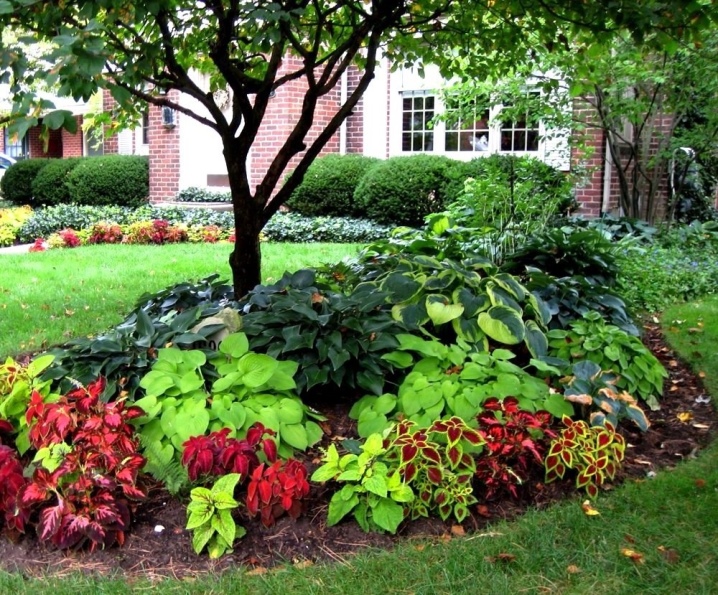
The very process of disembarking hosts on the site looks quite simple.
- On the site, with the help of a shovel or agricultural machinery, wide pits 1.2-1.4 meters are dug. The minimum depth is 30 cm.
- An hour before planting the plants, the ground in the pits is watered abundantly, then a drainage layer of crushed stone or broken brick is organized
- Part of the prepared soil is placed in a pit, a small hill is formed on which the seedling is installed.
- The roots of the plant are evenly distributed in the pit. They should grow in different directions and in no case bend.
- The rest of the soil is evenly distributed between the roots of the plant in the hole. The root collar of the plant should rise slightly above ground level - over time, the soil will settle slightly and the planting site will level out.
- After that, the earth is compacted and watered again. After the soil dries up, mulching is carried out.
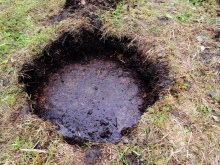
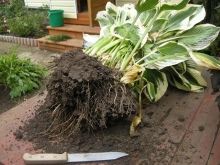
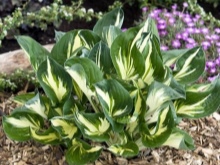
Care features
Hosta care will not cause much difficulty even for novice gardeners. Tips for the main steps of caring for this plant will be discussed below.
Watering
The main task of the gardener in the case of hosts is to often water the plant and prevent the soil from completely drying out in the trunk circle. In order for moisture to remain at the roots of the plant for a longer period, a layer of mulch should be organized from peat, bark, straw or needles. In addition, the earth itself must have sufficient water permeability.
Watering the hosts is carried out at least 2-3 times a month in the autumn and spring seasons, and about 1 time in 3 days in the summer or after the young seedlings are planted in a new place. Depending on the age of the plant, one watering should take from 1 to 3 ten-liter buckets of settled water. Before watering, the soil in the near-trunk circle is loosened. It is advisable to water the hosts in the early morning - until 10-11 hours.
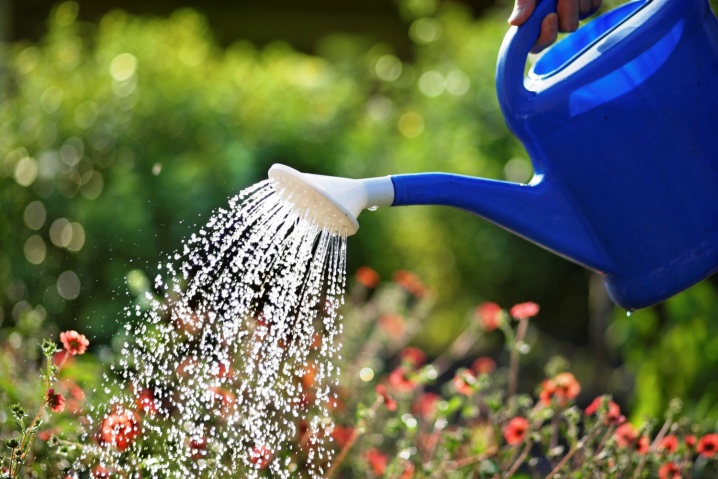
The most important mistake gardeners make when watering hosts is superficial watering of the leaves of such a plant. With this watering, drops of moisture roll down smooth leaves outside the plant roots, which leads to degradation of the root system or rotting of leaf rosettes.
Pruning
Gardeners have mixed opinions on pruning these plants. Some argue that before the onset of cold weather, the entire upper part, both peduncles and leaves, should be cut off almost flush with the ground. According to experts, this prevents fungal infections of the host's root system and does not provoke the appearance of pests.
Other gardeners are convinced that only the peduncles should be cut for the winter, and the leaves themselves should be left intact. Dead foliage will reliably shelter the rhizome from winter frosts.
Prophylactic pruning of buds and dry leaves of hostas can be done at any time. This procedure also includes examining the plant for rotten rhizomes or pests.
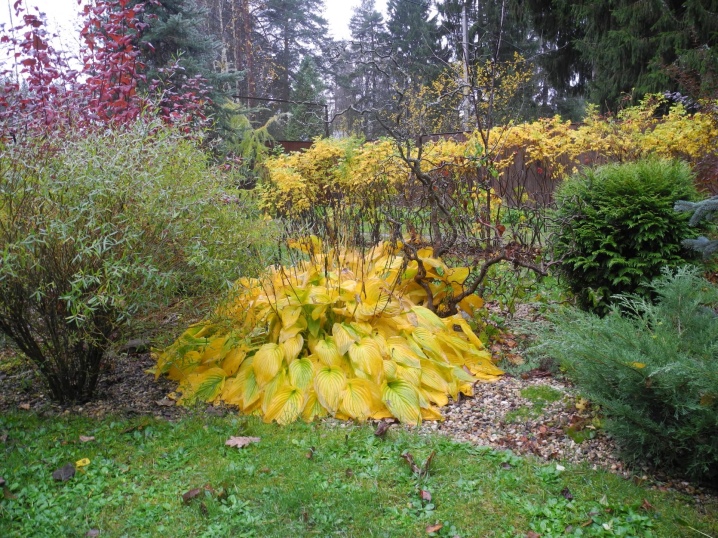
Transfer
Transplanting is a natural and even desirable process when it comes to a garden plant such as the hosta. It is usually carried out in the fall in conjunction with the procedure for dividing the bush. During this procedure, the mother bush is dug up, the root system is cleaned and divided with a sharp knife into separate shoots with two rosettes and powerful roots. Planting new bushes should be carried out no later than mid-September, so that they have time to take root before the onset of cold weather. The process of planting such bushes is no different from planting a young hosta bush.
If the landing site is chosen successfully and all conditions are met, this plant can successfully grow in one place for 15-20 years and without transplanting.
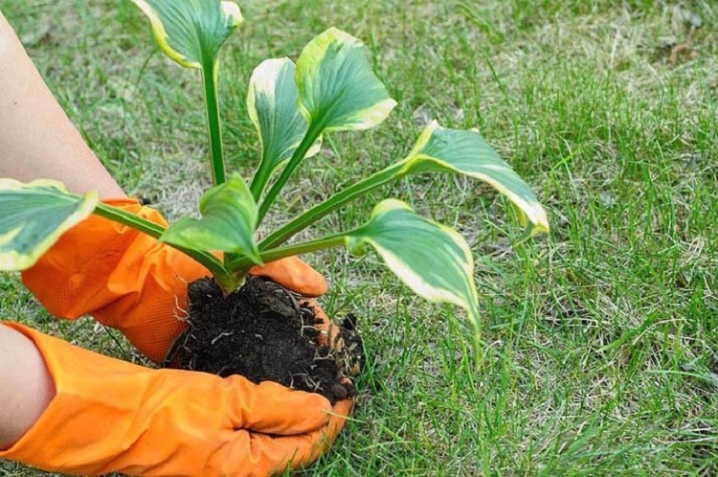
Wintering
Preparing the hosta for wintering involves the complete cutting of the peduncles, as well as the leaves of the plant. In addition, all the fallen leaves in the trunk circle are removed, and the earth is loosened. With this procedure, you will destroy the larvae of pests placed in the ground during the wintering period. To preserve the root system of the plant and strengthen the hosta's immunity before winter, a nutrient layer of mulch from peat or not fresh manure should be organized in the near-trunk circle.
The host does not need additional shelter for the winter. This is a fairly frost-resistant plant that can withstand even the most severe cold.
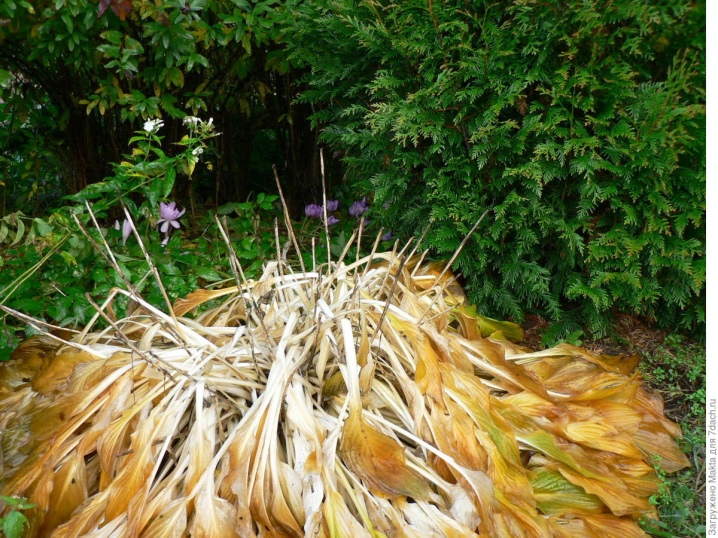
Top dressing
For ornamental hosta varieties, feeding is a mandatory element of care - it affects the brightness of the color of the foliage of the plant, the density of the leaves and the power of the root system. Hosta is excellent for both organic and mineral fertilizers.
Organic matter is supplied to the plant in the form of a layer of mulch from needles, compost, hay, straw, peat, decomposed manure or needles. This not only fertilizes the upper root shoots, but also retains moisture at the surface of the ground. Mulching is carried out 2 times a year - until the active growth of roots and in the summer - until the formation of inflorescences.
Mineral fertilizers can be applied directly to the trunk circle near the hosta bush (in the form of a solution or granules) or mixed with organic fertilizers in a layer of mulch. Such dressings are carried out up to 3-4 times per season, depending on the age and variety of hosts.
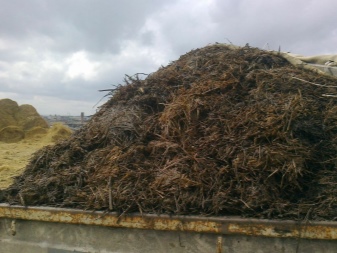
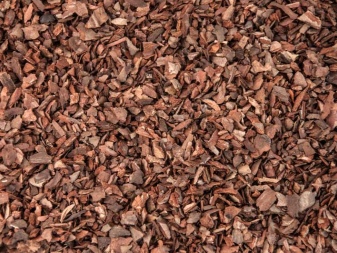
Reproduction methods
Gardeners resort to only 3 methods of breeding hosts: cuttings, growing seedlings from seeds, and dividing the bush.
The most common is reproduction by dividing the bush., which is usually carried out in conjunction with the autumn transplantation of the mother plant. For this procedure, already adult bushes (4-5 years old) with a developed and powerful root system are selected.
The very process of such reproduction has already been described in the subtitle "Transplant".
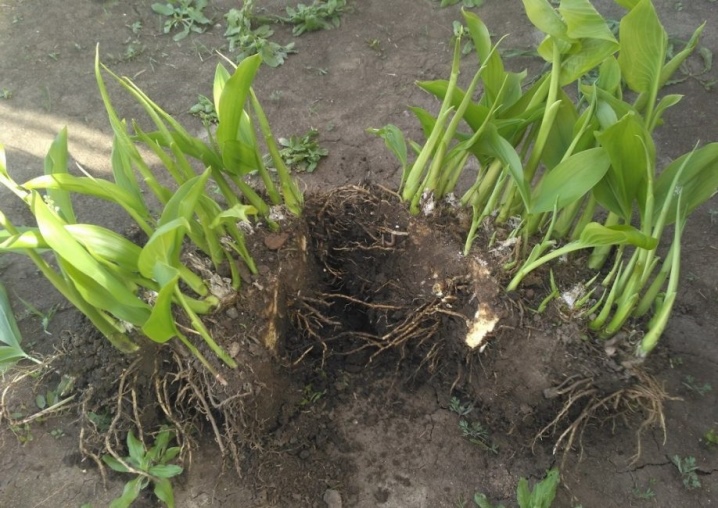
Reproduction using cuttings is the second most popular method. In this case, a strong and adult shoot with its own root system is separated from the mother plant. After that, the cutting is planted in a separate place and covered for several days with a bottle or plastic jar.
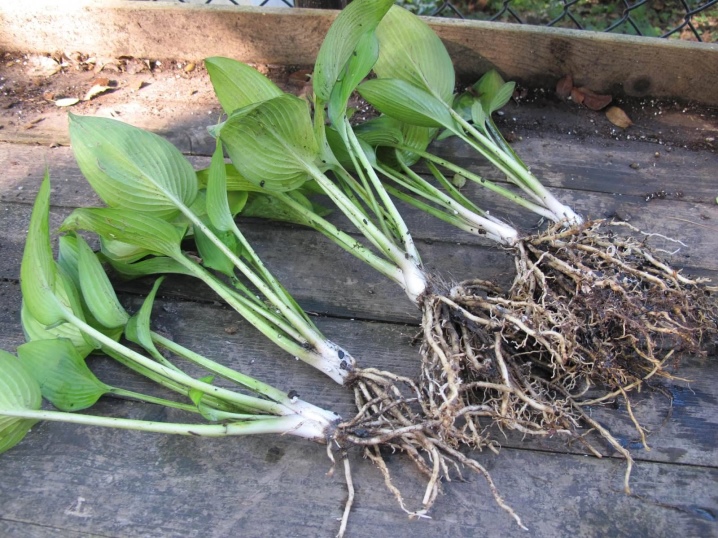
You can also dilute the host with seeds., but such reproduction is a rather complicated and not particularly popular method. You should prepare right away for a low germination rate and a lot of wasted time.
Before planting in containers, hosta seeds should be soaked in a growth stimulant solution. The best time to plant seeds is mid-April or early May. After planting the seeds, the containers are covered with a transparent film to create a natural microclimate. Occasionally, the film should be slightly opened for watering and airing the seeds.After about 3 weeks, you will notice the first shoots. A pick is carried out after 2-3 leaves appear in the seedlings.
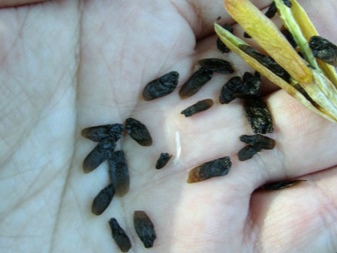
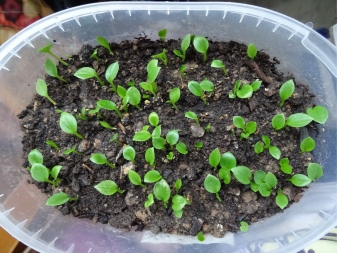
Diseases and pests
Hosta has incredibly good health, which, together with proper care, reduces the likelihood of disease or pests to a minimum.
If we talk specifically about diseases, then most often the host is affected by the so-called gray rot, sclerotinia, as well as phylostictosis.
- Gray mold infestation occurs with frequent stagnation of water in the sockets of the plant, as well as at the root growth. A plant affected by this disease begins to actively turn yellow and discard foliage.
- Phylosticosis is a dangerous fungal disease, which is expressed in the appearance of local brown spots on the leaves of the hosta. Usually this disease appears on plants that have painfully survived the winter.
- Sclerotinia affects the leaves and inflorescences of the hosta and manifests itself in the form of a characteristic white mold or cobweb.
Standard folpet-based fungicides are used to combat these diseases. Dichloranes work best for sclerotinia. In rare cases, it is advisable to dig up the plants and completely destroy them so as not to provoke infection of neighboring flowers.

The host is also susceptible to attacks from a number of specific pests. The most dangerous pest is slugs, but insect caterpillars, beetles, or even grasshoppers (destroyed by insecticides) can also bring harm to the plant.
The presence of meadow slugs and snails can be determined by the characteristic holes in the leaves of the plant. In the fight against these pests, special bait for slugs should help.
Usually, gardeners use beer as bait, to the smell of which slugs crawl.
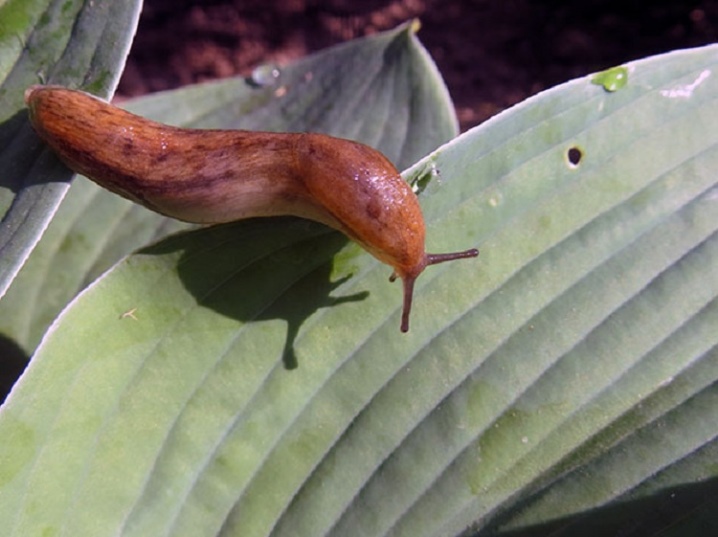
Another dangerous pest is stem nematodes. The most obvious sign of their presence is the dark specks along the veins on the hosta foliage. Unfortunately, it is impossible to get rid of the eggs of these parasites - the bush is completely dug up, and the area around its landing site is disinfected.

Possible problems
Some gardeners are faced with problems when growing hosts in the country. The most common problem situations: the flower does not grow well, does not bloom, dries. Most often, these problems appear due to a number of factors.
- The main reasons for slow growth may be irregular feeding or too close proximity to trees and other shrubs that take up moisture.
- If the hosta does not bloom, you should find out its variety and determine if your plant belongs to late varieties (and do not forget that the hosta is valued precisely for the foliage, not the inflorescences).
- The reason for the drying of the leaves of the hosta can be anything - from too little watering and excessive lighting, to a banal infection of the plant with pests.
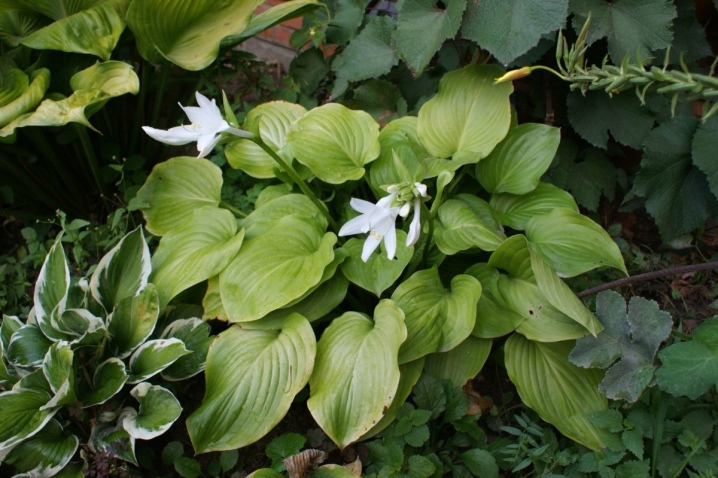
Tips for Beginners
To make the process of growing hosts in the open field as easy and productive as possible, listen to the following tips.
- Determine the exact grade of your hosts. This will directly affect the characteristics of its reproduction, planting time, watering intensity, requirements for soil type and lighting.
- Despite the frost resistance of this plant, the first 2-3 wintering young hosta bushes will be useful to cover with spruce branches. This is especially true for regions with severe frosts, but a thin layer of snow in winter.
- Novice gardeners should not propagate the hosta by dividing the bush. This is a difficult and stressful method for the plant that does not tolerate mistakes. Start with propagation by cuttings.

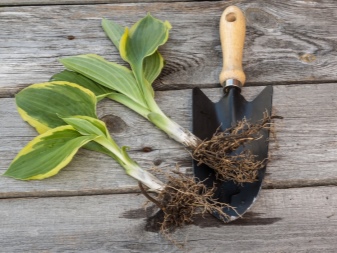
Use in landscape design
Today, large and dwarf host species are actively used in the design of summer cottages. They can be either a full-fledged part of a flower garden or flower bed, or they can frame garden paths or form curbs.
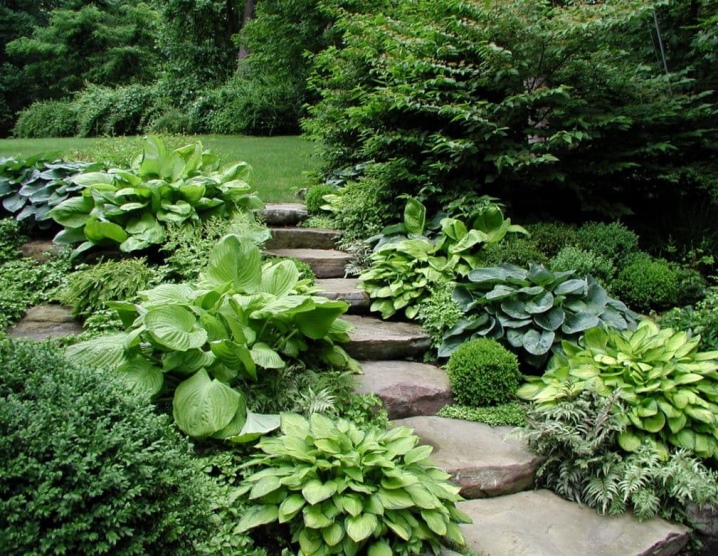
A definite plus of the hosts is their adaptability to growth in darkened areas. This is one of the few plants that will look good around a tree (for example, under an apple tree).
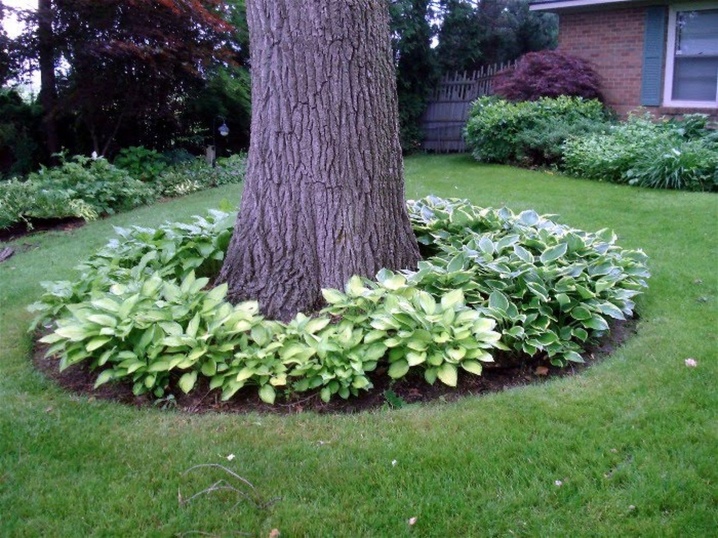
Hosta is able to create a sophisticated composition together with continuous flowering garden plants. Almost all garden crops can look great next to this perennial, but the host is best in harmony with heucheras, peonies, junipers, astilbe, hydrangeas and ferns.
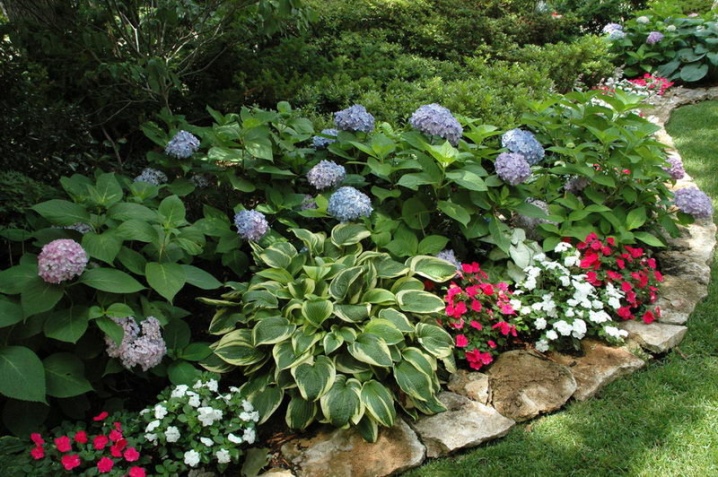
The currently popular alpine slide will be pleasantly refreshed by a bush of variegated hosta shrubs. Often, this plant is used to create such a decorative object that is currently in fashion, such as a mixborder.
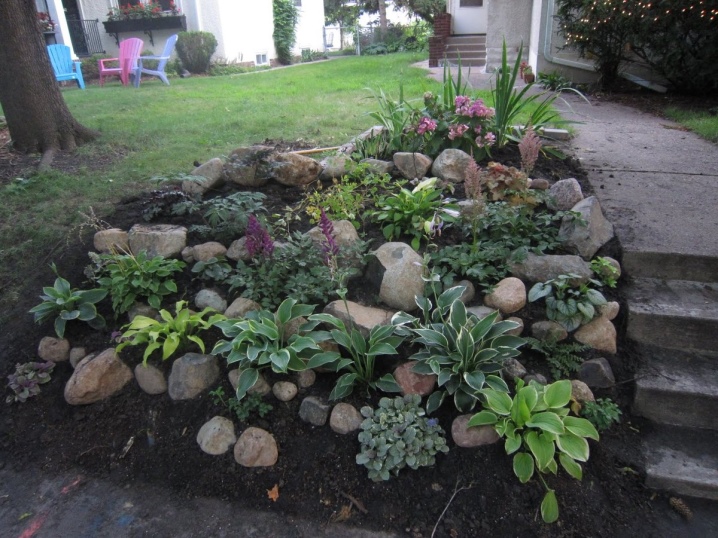
Tips for growing hosts in the video.







































































































The comment was sent successfully.